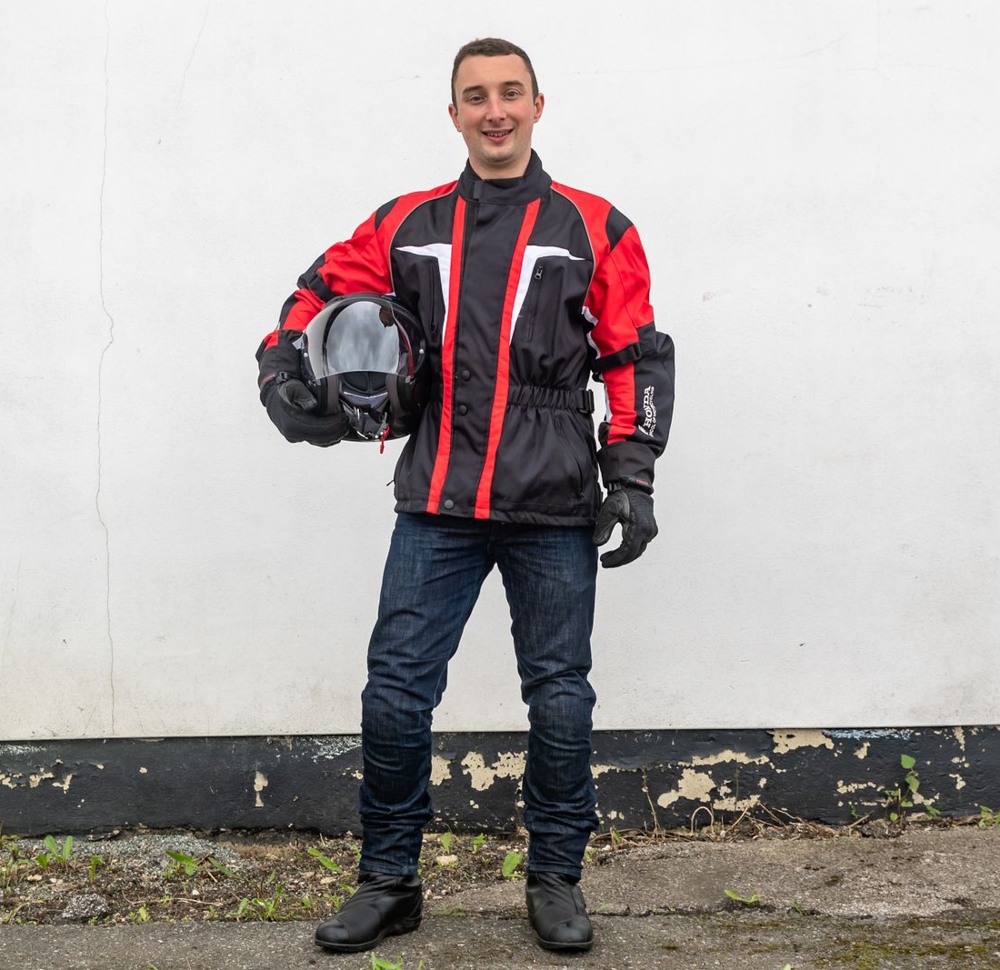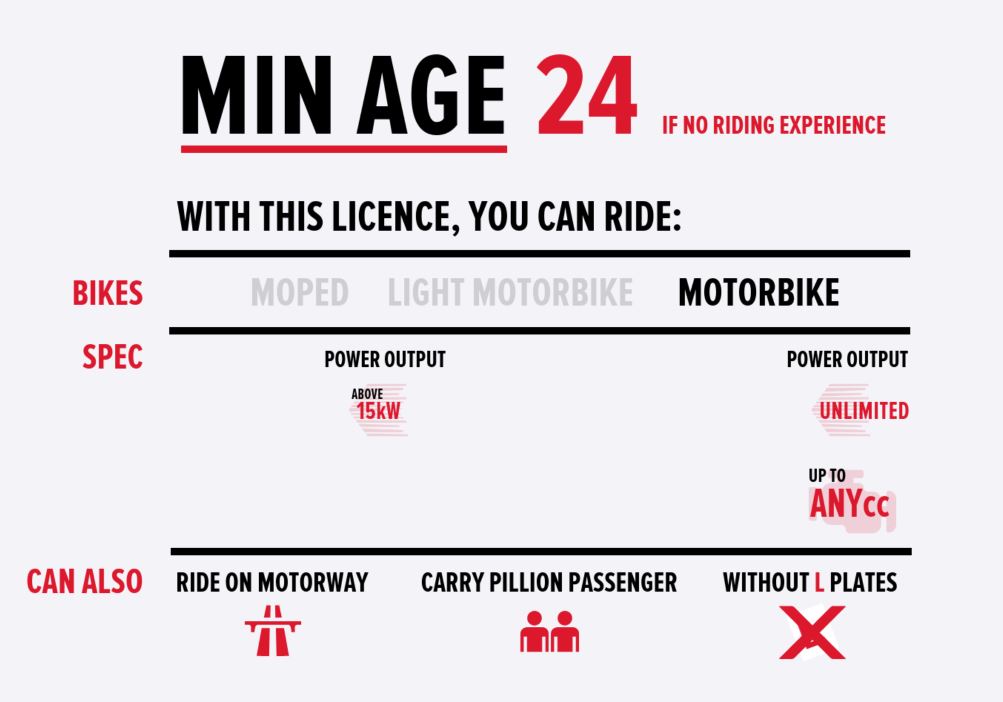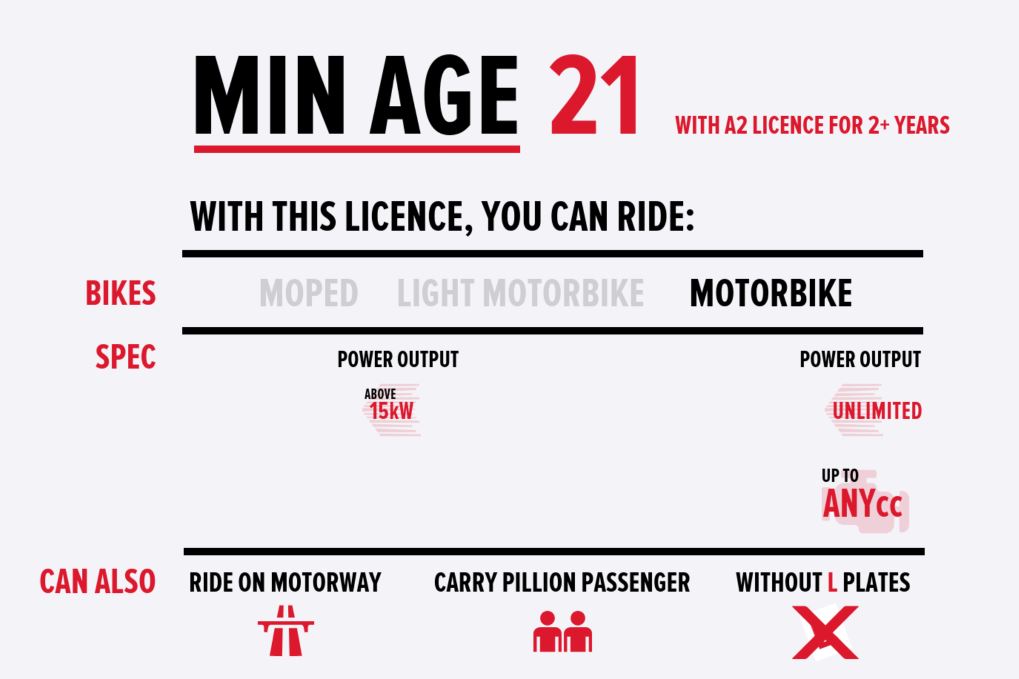WHAT IS CBT?
The CBT – Compulsory Basic Training – is an introduction to motorcycling.
It is designed to provide you with the riding skills that you will need. Successfully complete your CBT and you are legal (legally entitled) to ride on the road.


WHAT TO BRING
YOU NEED TO WEAR:
- A helmet which complies with BS 6658:1985. Your Honda Approved Training School will be able to provide you with this if you do not have one yet.
- A jacket which should ideally be warm, waterproof and provide good abrasion protection.
- Good quality leather (or strong material) gloves. Ideally these should cover (extend above) the wrist.
- A pair of sturdy boots which cover the ankles, and which provide good grip.
- Tough jeans or trousers – no shorts or lightweight materials.
ALSO BRING:
- UK driving licence (at least provisional).
- Glasses, if you need them for driving.
THE COURSE ITINERARY
The day is split into five parts, including initial classroom training as well as riding practice on-site and a final assessed road ride.
EYESIGHT TEST & INTRO
After having checked your driving licence you take a quick eyesight check. Your instructor will then explain the course and give you some hints and tips about the clothing that you are best to wear when riding.
ON-SITE TRAINING
After being introduced to the controls of your motorcycle you will be given the time you need to get used to the weight and feel of the bike. In addition, the instructor will also run through some of the basic maintenance that you are advised to carry out regularly.
ON-SITE RIDING
This is where the fun starts. You will get started learning all of the basic manoeuvres. Your will be guided through pulling away and braking, slow control, changing gear and all the necessary observations.
ON-ROAD TRAINING
Before taking to the road you will be given a full road ride briefing. This will tell you what to expect from your road ride and what the minimum two hour session will include. When you are good and ready you will take to the road.
ON-ROAD RIDING
The road ride must last at least two hours and will take you on a route which will cover a range of different road types and conditions, all of which you will experience in your day-to-day riding. You will also be asked to complete a U-turn and an emergency stop during this part of the CBT.
WHAT NOW
When you finish your CBT you will be awarded a certificate of completion (DL196). Choose your age below to see what you can now ride:
WHAT NEXT
Once you have your CBT, you need to pass a motorcycle theory test and practical test within two years, or your CBT will expire. There are different categories of licence available. You will take the same test for each, but on a different size of motorcycle. And the higher the level of licence category, (the wider the choice of motorcycles you will have and) the older that you need to be.

THE 'AM LICENCE'
From 16 years of age, you can take an AM test. You will need to pass a theory test and the two part practical test. If you take your test on an automatic moped you will not be entitled to ride a geared version.
THE 'A1 LICENCE'
From 17 years old you can elect to take your A1 licence which will entitle you to ride a motorcycle or scooter up to 125cc. You will need to take your Theory test (unless you have a full AM licence) and the two part practical test. Again, if you take your test on an automatic model you cannot ride a geared bike.


THE 'A2 LICENCE'
At 19 years of age and older you can take your A2 licence which will give you access to a wider selection of motorcycles or scooters (up to 35kw power output). You will need to take your Theory test (unless you have a full AM or A1 licence) and the two part practical test. Again, if you take your test on an automatic model you cannot ride a geared bike.
THE 'A LICENCE'
If you have held your A2 licence for two years or more, you can upgrade to a full A licence. This entitles you to ride any motorcycle of your choice. This means that this licence could be available to you from 21 years of age. You will need to take your Theory test (unless you have a full A2 licence) and the two part practical test. Again, if you take your test on an automatic model you cannot ride a geared bike If you are 24 years or older you can take the ‘Direct Access’ route and go straight for your A licence. You will need to complete your CBT and you will need a theory test. You will then complete your two part practical test.


THE 'A21 LICENCE'
Or you can take it at 21 years old if you have held an A2 licence for two or more years.
We are authorised and regulated by the Financial Conduct Authority, registration number 654936.
“We are a credit broker and not a lender. We can introduce you to a limited number of lenders and their finance products which may have different interest rates and charges. We are not an independent financial advisor. We will provide details of products available from the lenders we work with, but no advice or recommendation will be made. You must decide whether the finance product is right for you. We do not charge you a fee for our services. Whichever lender we introduce you to, we will typically receive commission from them (either a fixed fee or a fixed percentage of the amount you borrow). The lenders we work with could pay commission at different rates. However, the amount of commission we receive from a lender does not have an effect on the amount you pay to that lender under your credit agreement.” We will disclose the amount of commission we receive before you sign the agreement.
Complaints procedure.
We take all complaints seriously.
Our process for dealing with complaints received by us will differ depending on what the complaint is about.
1. Products regulated by the Financial Conduct Authority (FCA)
We will treat as a FCA regulated product complaint relating to credit broking or insurance product (Regulated Complaint) any oral or written or email expression of dissatisfaction, whether justified or not, from, or on behalf of, a person about the provision of, or failure to provide, a financial service, which alleges that the complainant has suffered (or may suffer) financial loss, material distress or material inconvenience.
2. Goods and non-financial services
All other complaints regarding goods or non-financial services supplied by us will be treated as a general complaint.
Process for all complaints
Many concerns can be dealt with straight away but sometimes it is necessary for us to look into the matters you have raised in more detail. Please address all complaints to our Managing Director in the first instance to our business address by post, or via the general enquiry form online.
The responsible department manager or director will contact you to attempt to resolve the concern.
If the concern has not been resolved within 14 days it will be automatically escalated back to the Managing Director. When a concern is believed to have been resolved by the responsible manager or director, they will submit the concern for closure via the Managing Director.
You may raise or discuss your concern with our Manging Director at any stage.
Process for general complaints
After the process above, if we are unable to resolve your complaint to your satisfaction, then we will provide details of certified Alternative Dispute Resolution providers that you may contact.
Process for Regulated Complaints
In addition to the process above, our management team will also review all regulated Complaints and we have a slightly more formal process as follows:
• Promptly following receipt of your complaint
Any regulated Complaint that has not been resolved straight away will be recorded by our management team and we will send you a letter to acknowledge your concerns.
If we believe that another firm or company is responsible for the matters to which your complaint relates and is therefore best placed to resolve it, we may forward your complaint to them to investigate. If we do so, we will write to you to let you know and will give you the name of the firm or company to which we are forwarding your complaint.
• Within eight weeks from receipt
Unless covered by the second paragraph below, we will aim to have completed our investigation and provide you with our final response in relation to your complaint within eight weeks of receipt of your complaint. If we cannot provide you with our response within eight weeks, we will write to you explaining why this is the case and indicate when a response will be sent to you. You will also be advised of your right to take the matter to the Financial Ombudsman Service should you be dissatisfied with the outcome of our investigation and our final response.


